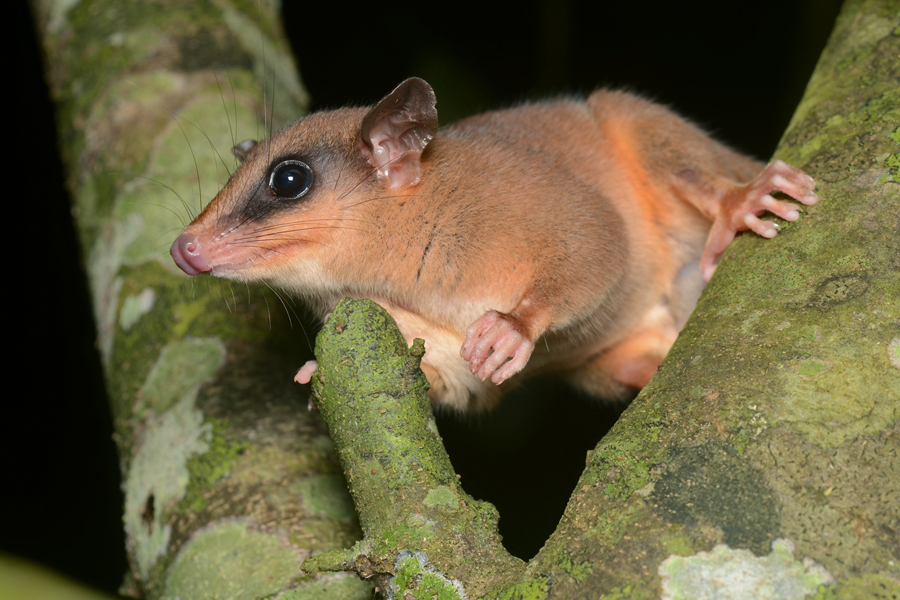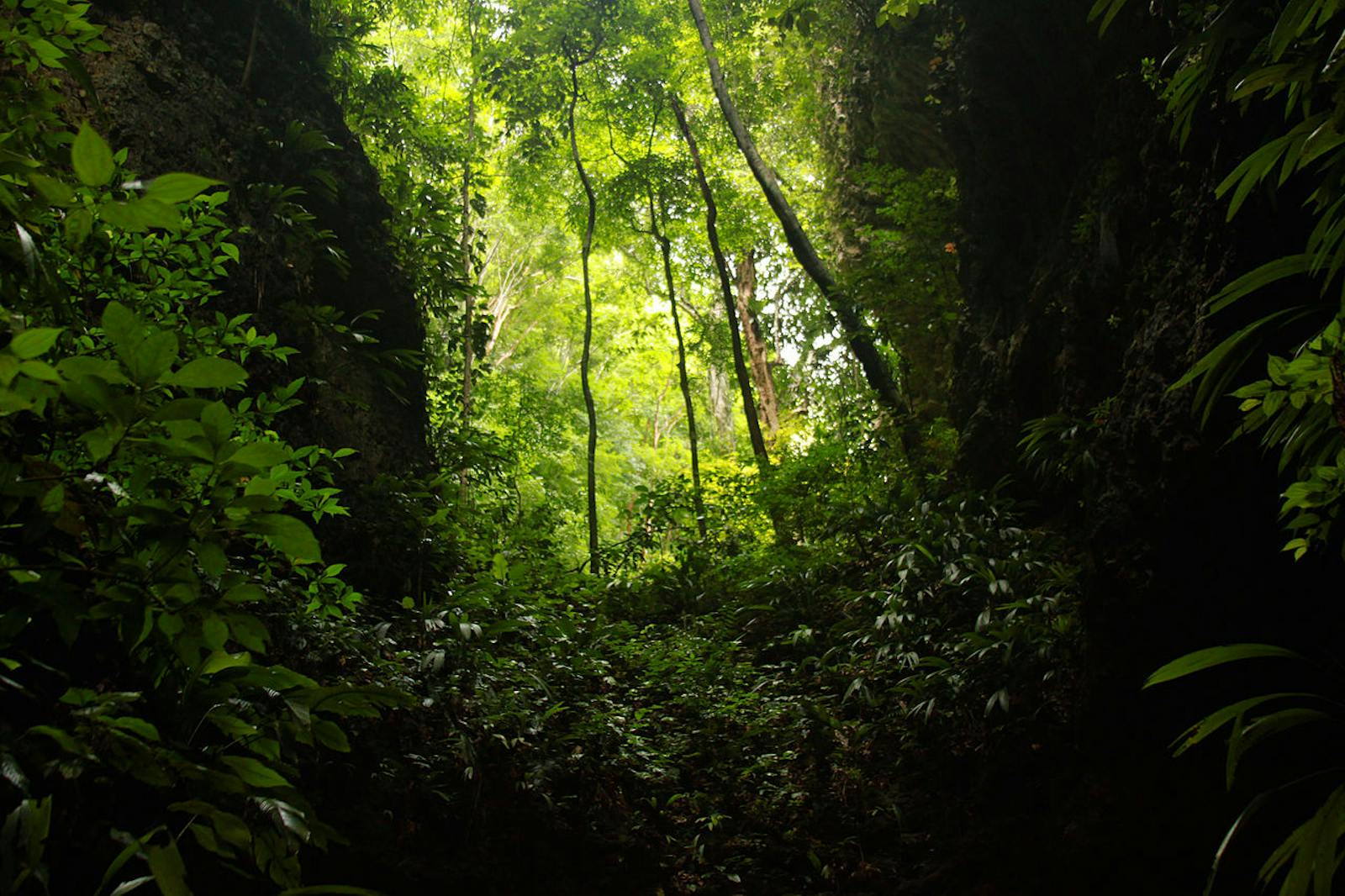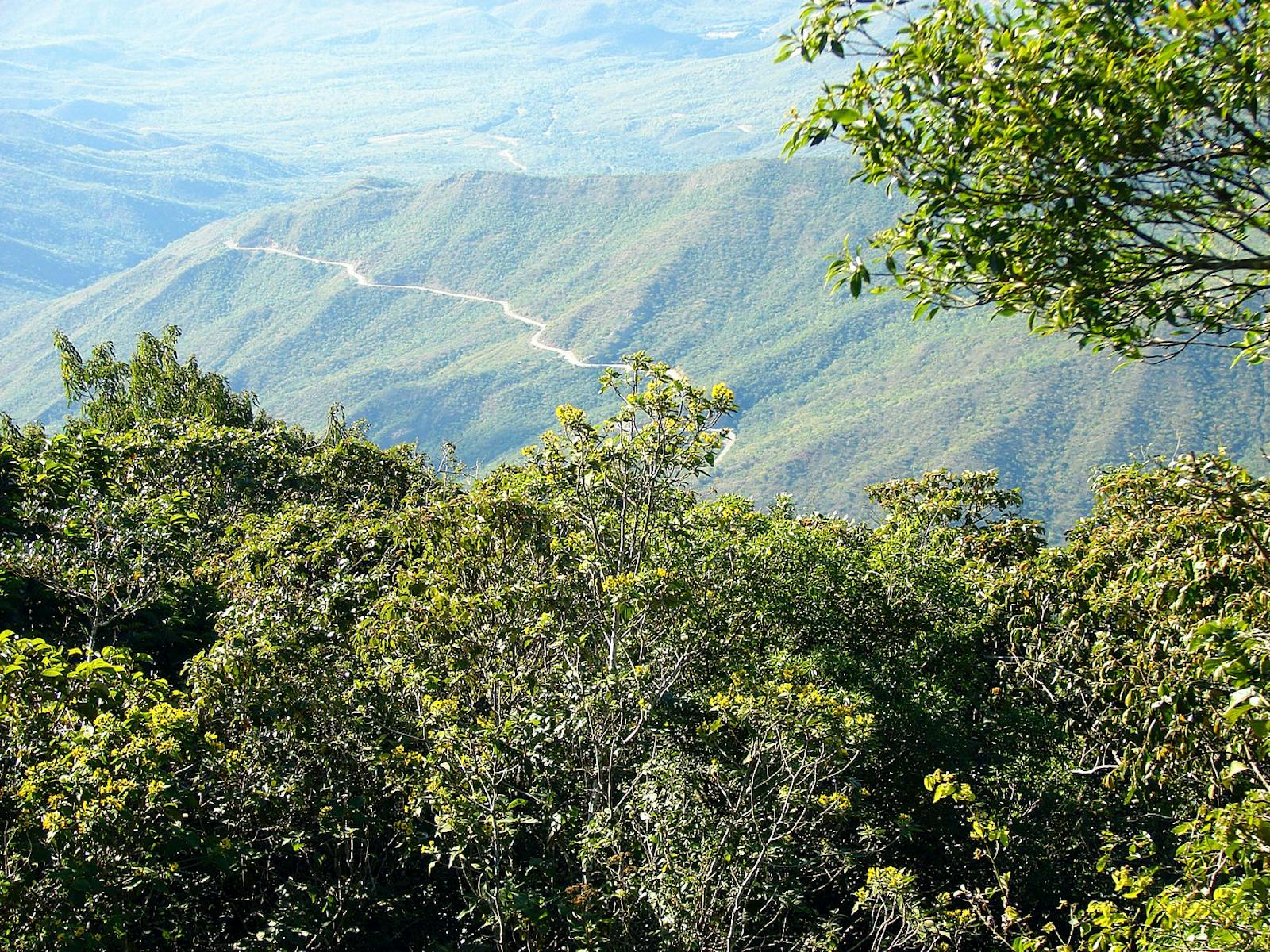Lara-Falcón Dry Forests
The ecoregion’s land area is provided in units of 1,000 hectares. The protection goal is the Global Safety Net (GSN1) area for the given ecoregion. The protection level indicates the percentage of the GSN goal that is currently protected on a scale of 0-10.
Bioregion: Venezuelan Coast (NT23)
Realm: Southern America
Ecoregion Size (1000 ha):
1,698
Ecoregion ID:
536
Conservation Target:
58%
Protection Level:
7
States: Venezuela
Very little is known of the dryland mouse opossum, only that it is found primarily within the Lara-Falcón Dry Forests ecoregion in both Colombia and Venezuela. Also known as the Guajira mouse, this small marsupial is nocturnal and is believed to sleep in the canopy of the dry forest in holes and other opportunistic hide-outs. Assuming its behavior from other closely related opossum species, the dryland mouse opossum crawls around through vine tangles and branches looking for insects and opportunistically also for fruits, lizards, bird eggs, and small rodents, and would maintain a territory.

The flagship species of the Lara-Falcón Dry Forests ecoregion is the dryland mouse opossum. Image credit: Creative Commons
The Lara-Falcón Dry Forests lie in northern Venezuela, south of the Paraguana Peninsula, east of the Gulf of Maracaibo, and north of the Andes. The ecoregion is located in the states of Lara and Falcón in the northwestern side of Venezuela. This arid region lies between two dry desert scrub habitats. Major rivers in the region are the Hueque, Tocuro, and Aroa. Elevation ranges from 100–1,300 m. The precipitation ranges from 300–1,000 mm. The median yearly temperature is from 27 to 28°C.
Most of the soil has low fertility but this has not deterred agriculture. The variation in elevation and rainfall creates multiple microclimates that result in diverse vegetation throughout the mountainous area. This takes form from dense drought deciduous lowland woodland to submontane woodland and to evergreen seasonal lowland forest.
There is only one endemic plant, Apoplanesia cryptantha, located in deciduous woodlands in the eastern area of the ecoregion. The only distinct mammal of the ecoregion is the vulnerable dryland mouse opossum, endemic to the dry forests ecoregion in Venezuela and Colombia. It is considered well adapted to dry habitats and is mainly found in deciduous forest. Birds common to this ecoregion and other arid scrublands include the vulnerable yellow-shouldered parrot and pygmy palm swift, as well as buffy hummingbird, white-whiskered spinetail, black-backed antshrike, and Tocuyo sparrow, all of which are considered least concern.
There is little protection for the Lara-Falcón Dry Forests ecoregion. Protected areas include the Cueva de la Quebrada del Toro National Park (also containing an important large cave formation), Juan Crisóstomo Falcón National Park and Serranía de San Luis National Park.
The entire region has been severely affected by agriculture and livestock grazing. The most altered areas are in the northern and central parts of the ecoregion. This current and historical habitat loss is the greatest threat to the biodiversity of the ecoregion. Furthermore, the continued domestic pet trade threatens the declining populations of yellow-shouldered parrot, despite that it is protected by law in Venezuela. Natural disasters, such as drought, can affect the populations of the endemic birds in the ecoregion as well as other flora and fauna species. The continued restriction of their ranges due to habitat loss would mean that a single natural disaster could wipe out their remaining population in one place or in several small pockets.
The priority conservation actions for the next decade are to: 1) encourage sustainable land use in livestock and agriculture farming practices; 2) increase the number of protected areas, targeting known habitats of at risk species; and 3) raise public awareness to deter the illegal pet trade of native wildlife like the yellow-shouldered parrot.
Citations
1. Locklin, C. 2018. Northern South America: Northern Venezuela https://www.worldwildlife.org/ecoregions/nt0219 Accessed November 6, 2018.
2. Eisenberg, J. 1989. Mammals of the Neotropics Volume 1: the northern Neotropics. University of Chicago Press, Chicago.
3. Stattersfield, A.J., M.J. Crosby, A.J. Long, and D.C. Wege. (1998). A global directory of Endemic Bird Areas. BirdLife Conservation Series. BirdLife International, Cambridge, U.K.
4. Pérez-Hernandez, R., López Fuster, M. & Ventura, J. 2016. Marmosa xerophila (errata version published in 2017). The IUCN Red List of Threatened Species 2016: e.T12815A115106154. http://dx.doi.org/10.2305/IUCN.UK.2016-3.RLTS.T12815A22174448.en Accessed November 6, 2018




